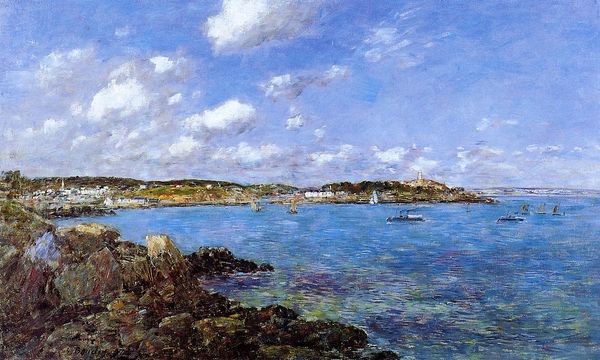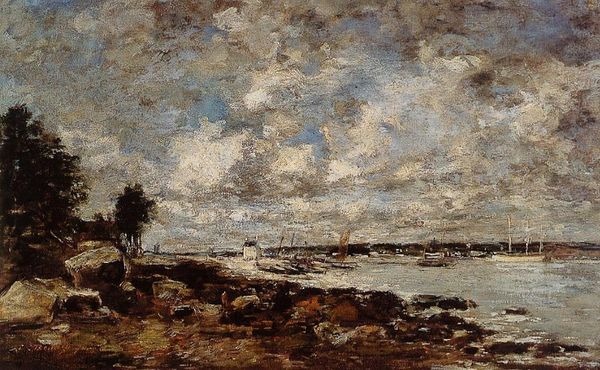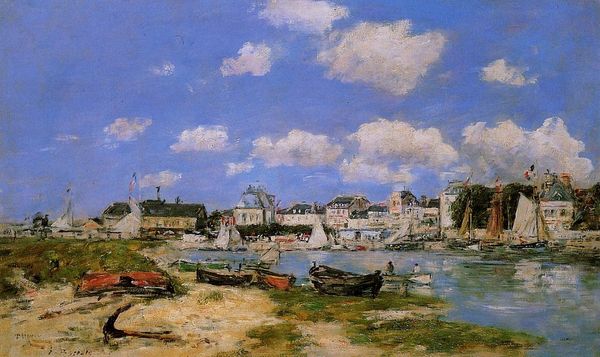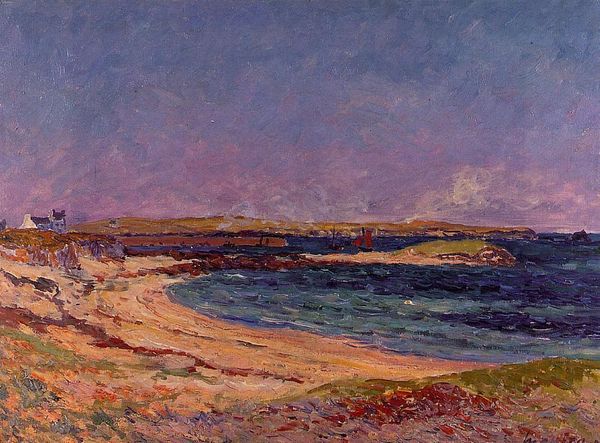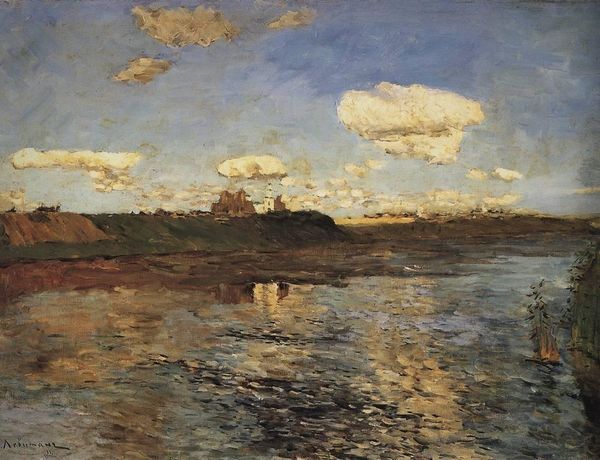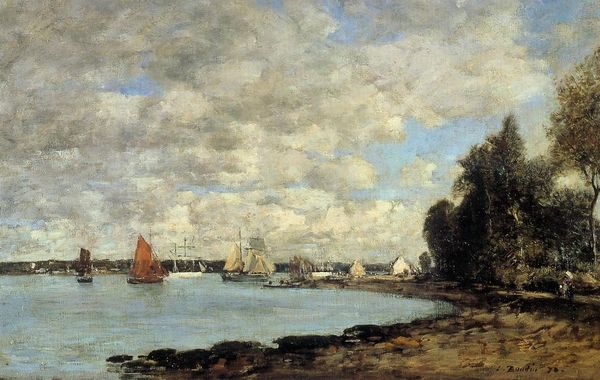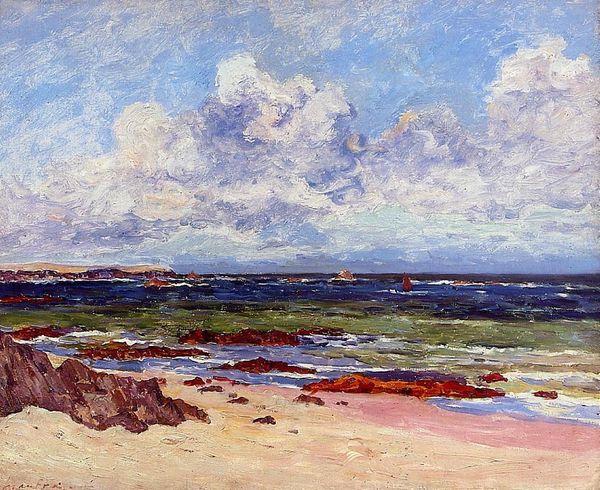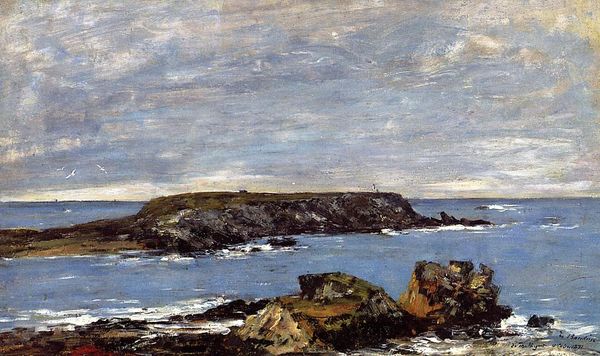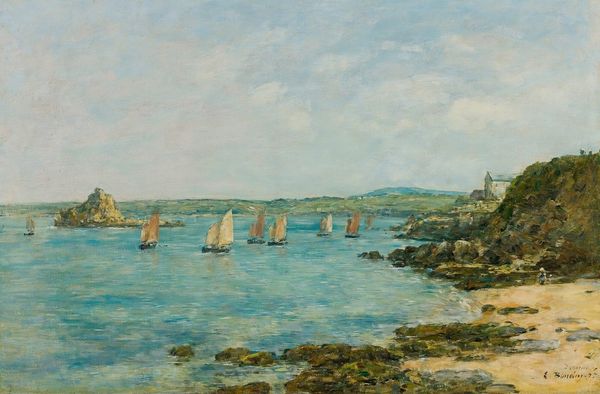
Copyright: Public domain
Editor: We’re looking at Eugène Boudin's "Douarnenez, the Bay, View of Tristan Isle," painted in 1897, an oil-on-canvas work rendered en plein air. The scene is serene, almost idyllic, with those pastel colors and hazy outlines. How do you interpret this depiction of the bay, considering the time it was created? Curator: Well, on the surface, it seems like a pleasant seascape, firmly within the Impressionist style. But if we dig a little deeper, we can ask, "What kind of tranquility is being represented here, and for whom?". Remember, Boudin painted this toward the end of the 19th century. Brittany was a region undergoing significant social and economic shifts as it became more integrated into the French state. Tourism was beginning to change the local culture and economy. Does the painting engage with these issues at all, or does it present an idealized escape from reality? Editor: That’s a great point. I hadn’t considered the economic context. So, perhaps this idyllic scene serves to mask a more complex reality. But how does Boudin’s style itself contribute to this possible masking? Curator: Precisely. Impressionism, with its focus on fleeting moments and subjective experience, often sidestepped the gritty realities of industrialization and social inequality. Is Boudin using the style to promote a specific idea? This wasn't simply about accurately portraying visual perception, right? It was about constructing a particular *image* of France, perhaps for consumption by a rising middle class eager to embrace a romanticized vision of the coast. Editor: I see. It’s like the painting is both a window onto the bay and a carefully constructed mirror reflecting certain desires and ignoring others. That's much more complex than I initially thought. Curator: Exactly. By examining the historical and social context of Boudin’s work, we can appreciate it not just for its aesthetic qualities but also for its potential role in shaping perceptions of place and identity. What do you make of it now? Editor: It's now a richer landscape. Considering its function within those cultural forces gives a much greater context for the artwork, for sure.
Comments
No comments
Be the first to comment and join the conversation on the ultimate creative platform.
